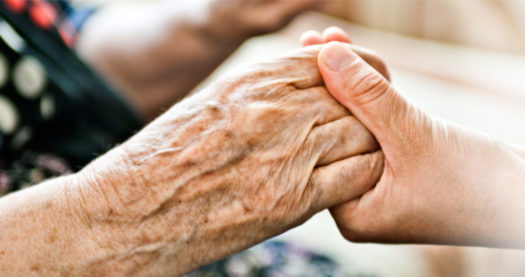Deciding to have a loved one move in often is often full of mixed emotions. You want to do what is best for the person who needs to relocate, but how will this change impact your home and you personally? The advice that I received from others was mostly supportive of the idea, but the opinion of one of my most valued role models, Dr. Laura Schlessinger, was against it. I will argue both sides and you can be the judge.
The positives of having your loved one at home is that you have more control over their care. You can manage their medications, activities, meals, and social life. They generally are happier being among family over strangers. The cost is less – even with in-home caregivers. You can spend more time with the loved one and create many more new memories.
The negatives are the added responsibility of managing that loved one’s care. If you try to be their primary caregiver without the help of professionals, you can easily exhaust yourself on a daily basis tending to the loved one’s needs. Your own personal time or time with other family members will be minimized. You also have to give up space in your home for this person to stay that will often involve incorporating their belongings with yours. In some cases, that may mean that other family members are inconvenienced in order to find the extra room.
Dr. Laura argues that one should give priority to their immediate family, spouse, and themselves. A caregiver’s responsibility should not involve sacrificing time and attention from spouses and children. She suggests that the caregiver’s responsibility is to find a proper place or caregiver service for the loved one to make sure their needs are being met. If the loved one cannot afford these places or services, they need to find the resources to help pay for it – even if that means the entire family of the loved one pitching in to help fund their care.
If you have read my previous blogs, you understand the reasons why I made the decision to move my mother in with me. I can understand and appreciate both sides of this argument. Mother has been in my home for a week and a half. The first week was a challenge and I started doubting my decision right off the bat. I had lived alone for most of my adult life, so adding anyone new to my household would require adjustment on my part. When you complicate that situation with a completely dependent housemate, I will not lie that I had to check my attitude a few times.
 Even with 9.5 hours a day of help from an in-home caregiver service, I was finding most of my day being spent helping them with my Mom. Cooking, cleaning, shopping, doctors appointments, dressing, bedtime, medications, and an ongoing list of to do’s would occupy my day. I had very little time to do anything for myself. Mother had to adjust, as well. She had to realize that not every urge and want of hers needed to be performed by someone else right then and now. She needed to learn patience. She had to get used to the caregivers spending most of the day with her and understanding the necessity of their purpose. A routine needed to be established.
Even with 9.5 hours a day of help from an in-home caregiver service, I was finding most of my day being spent helping them with my Mom. Cooking, cleaning, shopping, doctors appointments, dressing, bedtime, medications, and an ongoing list of to do’s would occupy my day. I had very little time to do anything for myself. Mother had to adjust, as well. She had to realize that not every urge and want of hers needed to be performed by someone else right then and now. She needed to learn patience. She had to get used to the caregivers spending most of the day with her and understanding the necessity of their purpose. A routine needed to be established.

I am happy to say that once the first week was over, things have settled down substantially. I am able to let the caregivers do their thing with her and go off and do my work. Hence, a blog today!
Next week, is the big Life Event Sale at Mother’s home. I will be busy working that sale. If you are in the East Texas area, come check it out June 1-3.






 When a few weeks were left prior to the 100 day mark of Mother’s skilled nursing stay, a care meeting was called to discuss her future plans. It was during this meeting that I learned the real truth about the financial end of long term care.
When a few weeks were left prior to the 100 day mark of Mother’s skilled nursing stay, a care meeting was called to discuss her future plans. It was during this meeting that I learned the real truth about the financial end of long term care.



